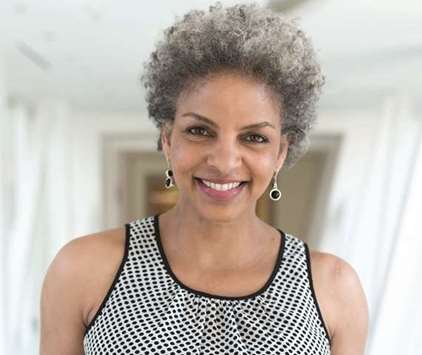A nurse gave her Valium through the IV in her left arm, and then Grubbs was wheeled off to the operating room, where a surgeon would extract one shiny pink kidney from deep within her abdomen.
Grubbs, who is not a woman given to halfway gestures, not only gave a kidney to the man she loved on that day in April 2005 — she did so after dating him for only nine months.
“A lot of people thought I was insane,” she recalled.
“We weren’t officially engaged, but it’s not like we were teenagers. We had (chuckles) — how do you say it? We’d been to the circus, seen all the rides. So we kind of knew what we wanted in a partner; we knew where we were going.”
Grubbs married her boyfriend, Robert Phillips, now the CEO of a Sacramento nonprofit, four months after the surgery. And she didn’t stop there.
Distressed by the racial disparities in health care she encountered during her husband’s medical odyssey, she shifted course professionally, pursuing advanced training in the demanding field of nephrology, or kidney treatment.
She also became an advocate for African-American patients, who have to wait nearly two years longer than whites to get life-saving transplants.
Grubbs, 47, an associate professor of medicine at the University of California at San Francisco, and the author of the new book Hundreds of Interlaced Fingers: A Kidney Doctor’s Search for the Perfect Match, recently discussed her journey and her goal of educating the public about kidney disease.
She and her husband live with her teenage son in Oakland, California.
The following is an edited transcript.
How is your husband doing?
He’s doing well. After the hospitalisation, he never required dialysis again — knock on wood! He immediately felt better, and he immediately started doing things — planning for his future. He works full time.
The kidney was never considered perfect. He’s a big man, and my kidney was considered relatively small for him. The kidney function tests never came down to normal. But for us, it’s good enough — good enough to keep him (healthy), hopefully, for the rest of his life. It’s been 12 years now, and things are about the same, so we’re really happy about that.
Do I have this right, the background photo on your Twitter profile is a detail of a kidney?
(Laughs.) Yes, I’m going to change that one. No-one understands it, but to me, it’s really gorgeous. That’s the kidney on an electron-microscopic level. It was pictures like that I saw when I was (doing advanced training) that really made me feel awe of the kidney for the first time. Sadly, you don’t really have to delve into nephrology when you’re a medical student.
I was surprised by the figure that African-Americans wait two years longer than white people for kidney transplants. Why is that?
I think a lot of things go into it. For example, when you think about the process of what it takes to actually get from needing a kidney to getting one. First, you have to know that you have kidney failure, which means you have to be in care, which makes it hard to do if you’re uninsured — and particularly if you’re feeling well.
The thing about kidney failure is that people feel really well until it’s almost time to start dialysis, for the most part. So you have to know that something’s wrong, you have to be in care, you have to be referred to a nephrologist and then that person has to look at you and think about kidney transplant and talk to you in a way about it that sounds like a good idea to you, then actually make the referral.
So a lot of things happen long before you even get to the transplant centre, and then they have their set of rules and make the decisions about who gets a kidney in their closed space. It’s not a transparent process, which to me always brings up flags in terms of what’s happening. So I do think there is (that) part of just the actual transplant centre, but there are many steps before anyone gets there that contribute to the fact that blacks and people of colour, in general, are slower to get the transplant than whites.
If there was one thing you could change to make things more equitable, what would it be?
I think the way to get past our own personal biases, conscious and subconscious, is more automation. For example, a central lab where everyone’s results go, and when a person hits a certain level, it triggers a response: “This is what’s going on with you. Talk to your doctor about it” or, for the physician, “This person has hit this level of kidney function. Have you considered transplant or whatever else, and if not, why not?”
I think these kinds of fail-safes would get past a lot of the issues that make people stumble along the way.
Is there any movement toward doing that?
Not that I’m aware of. Our health care system is so disjointed, and the fact that everyone is doing their own thing means that we’re nowhere near having a unified system.
Is the average person doing enough to monitor his or her kidney health?
There’s so much that people aren’t aware of, from the basics to these larger societal issues. People should understand that high blood pressure and diabetes are two of the major risk factors for kidney disease in this country; it explains two-thirds of the kidney failure that we see.
What can we do?
People should get at least an annual physical, so they can get the blood and urine tests. Those simple things can detect a problem very, very early. —Chicago Tribune/TNS



